|
11. Obsessive
As we can see, the East Area Rapist was obsessive in concealing his face, trail, car and identity. He also seems to have monitored police transmissions. Around the time of the Interdepartmental Memo (December 1977), in which it was noted that EAR had a “proclivity” to wear olive green, he noticeably changed to a bland dark blue jacket or windbreaker. Windbreakers were quite common in the 1970s. This may indicate that EAR had some kind of tap on the Sheriff Department grapevine, but it could also mean that he closely monitored a police scanner. Richard Shelby, one of the detectives on the case, lamented in his recent tome (Hunting a Psychopath) that too much chatter was going over the police radios. EAR seems to have picked up on it.
This seems more likely than any kind of connection with the Sheriff’s office. EAR revealed clues in several jurisdictions that he monitored a police scanner, and it is unlikely that he had a personal connection in each county in which he committed a crime.
For example, on occasion homeowners noted that someone had been in their home. In a few cases, pictures of the homeowner and their family had been found disturbed or missing, or other indications of EAR’s beforehand-prowling had been uncovered, such as drawers left ajar, etc. This not only happened in Sacramento County but in Contra Costa County (680 Corridor). Notable incidents include those at Thunderbird Place, San Ramon. In all cases, the homes were along streets that were perfectly situated according to EAR’s Prowling MO— along a canal, park, golf course, bike trail, etc. In each case, the homeowners naturally had called the police. In each case, EAR never returned to the home or even the street. This is true even of Thunderbird Place where, according to Lt. Larry Crompton (Contra Costa Co. detective), they were careful to stake out the home in question at night and await EAR’s expected arrival. They were careful, very careful. They had parked blocks away and walked to the location. They had communicated over the phone or in person, not on the police radio. Yet, though EAR could not have known they had staked the house out, he never returned. Thus the only reasonable conclusion is that the original call from the homeowner to the police, from which a police dispatcher over the radio then sent a unit to investigate, was the communication that The EAR had monitored. It was enough for him to avoid the neighborhood again.
Thus one must conclude:
(a) EAR had and monitored a police scanner. He was thus someone
who had access to one at all times and kept a careful watch on it. This would
indicate a police scanner both at home and at work.
This cross-references to other clues:
12. Unidentified “jalopies.” In those neighborhoods that were struck, a neighborhood canvas by sheriff or police investigators uncovered that a suspicious car had been seen cruising slowly through the neighborhood or parked in certain areas days or even weeks before the attack. Invariably, this car was a jalopy. It was some old junker that could never be traced. The cars ranged from an old 1950s Chevy or Ford truck to an early 1970s Vega. They included an early 1960s faded pink Ford Valiant and several Volkswagens. In fact, a small car was frequently associated with EAR. In the case of No. 7, The EAR’s car had been parked on the edge of a muddy field. Investigators measured the muddy tire tracks of the car on the road where it had pulled out. From a glitch in the tread it was easy to measure the rear tires as 84 inches, indicating a large American model in this instance. In Stockton (No 31) a suspicious Volkswagen van had been seen. At the other Stockton location (No. 23), the car heard starting after the attack was said to be a Volkswagen. The victim at No. 28 was sure she heard the assailant start his car next to her house and it was a van. A suspicious van was seen in Danville (No. 46). A boxy, older white Datsun was also seen on two occasions. At No. 40 (San Ramon) an old Toyota Celica was seen cruising the neighborhood before the attack.
13. Bogus License Plates. Underscoring that these were junkers is the fact that a number of license plates had been taken down by area residents. The plate to the last car mentioned above had been junked the year before in Windsor, CA, October 14, 1977, far up Highway 101 north of the Bay Area. This was not unique. There was the Hartnell Place incident, December 1976, in Sacramento. The area fit EAR’s Prowling MO. A strange young man was parked in an alley behind the condos, scanning the area. He was in a faded pink Ford Valiant. When challenged, he fled and abandoned the car. He later must have returned, for the car vanished. The license plate had been taken down. It could be traced to a car that had been junked on November 20, 1976, in Lodi, Ca., to the south of Sacramento.
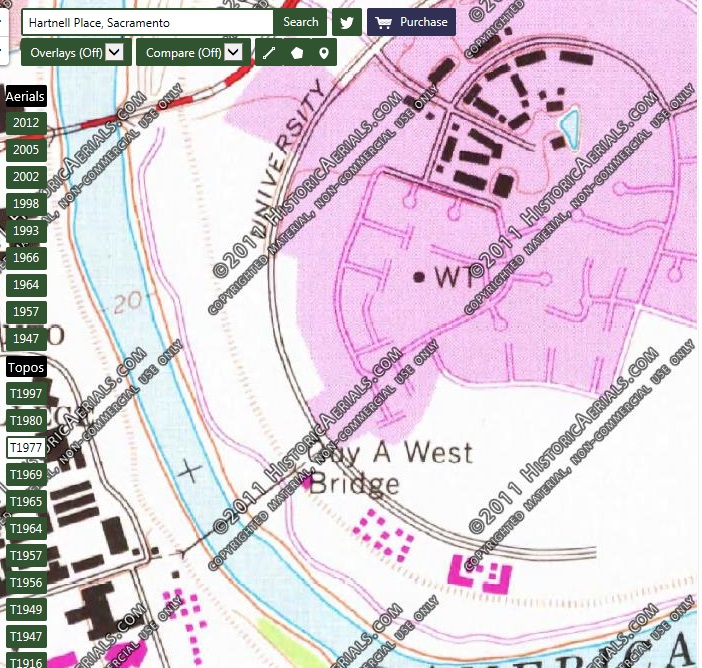 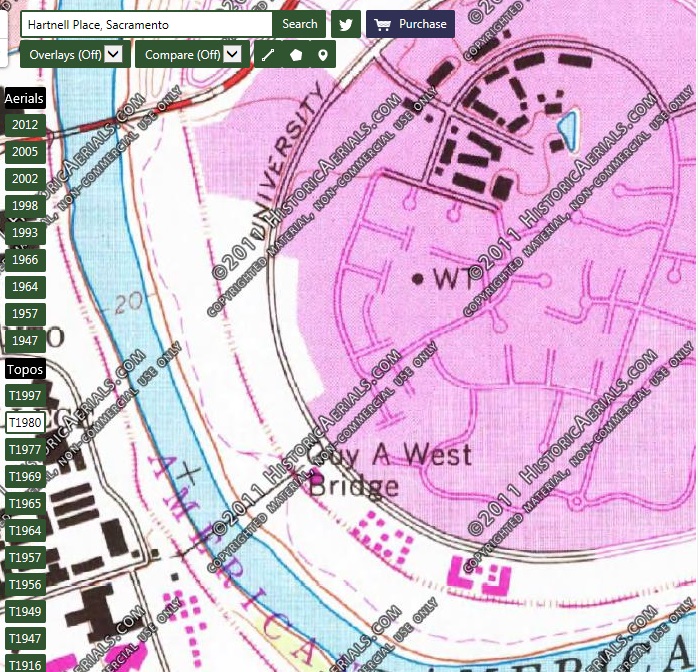 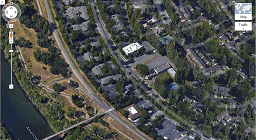
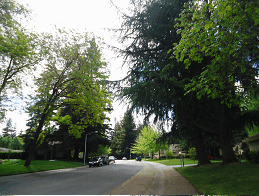 
 
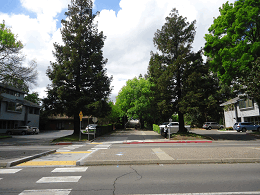 
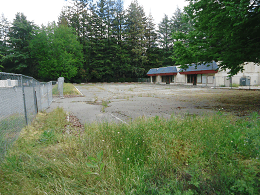 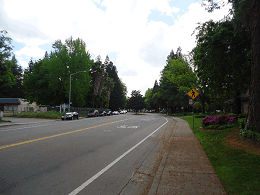

These are not isolated incidents. In every case where a plate was taken down the sheriffs could not trace it or the car.
This is a major clue. It introduces for us that EAR was or worked for:
14. An auto wrecker
As such EAR would be able to drive a tow truck and come and go all over northern California, picking up cars and taking them to the business yard where they would be dismantled for valuable pieces before being removed to the junkyard for compacting. He would be largely personally unsupervised during these times. He would become fairly familiar with a large number of neighborhoods. Moreover, within the queue of cars awaiting dismantling he could have his choice to drive for a while. In visiting the junkyards, he could lift what plates he wanted and switch at will. When the car’s time was due to be dismantled, this the only traceable accomplice to his prowling would be destroyed, the license plate stealthily discarded. A disposable and recyclable MO. As the sheriffs labored to trace the sundry cars, they were being compacted, perhaps with EAR’s own hand on the lever, and ushered away to become tin cans for soup.
It is as likely that EAR worked for:
A Car Dealership
It is very possible that EAR was the young son, nephew, or grandson of a major car dealer with several franchises over northern California. Car dealers also deal in used cars, and a member of the family starting out in the business wold be moving these cars to various lots and to other dealers in swaps. He could stalk a neighborhood on the way to the other lot, then get then swap the car out and drive back in yet another car and prowl the same or another neighborhood. He thus had two used cars in one day. If he left the lots with dealer plates, he could easily stop, switch them out for a stolen one he had from a wrecking yard, and then switch back to the dealer plate before arriving at the car lot. He had thus stalked a neighborhood with a car he would only have for a few hours, with a bogus plate, and then the car would be on a dealer’s lot and marked up for sale with a new, legal license plate. The dealer would be completely unaware. So would the law.
Original. Unique. Very ingenious. I would say brilliant if this was an MO that could be adopted randomly. But it cannot be. It is an MO of convenience. One must be an auto wrecker or work for a car dealer, possibly a grunt with a position of trust or a member of the owning family working in the business.
Dealers and auto wreckers are also intimately involved in towing accident cars and in receiving wrecked cars at their yards, and as such are quite close to local police and Highway Patrol via coming to the accident scene to remove the car. At such times the grunt could easily overhear information as they chatted about such a popular case as EAR or he could be well acquainted with some officers and inquire casually.
It is interesting to note that the largest auto wreckers in the East Area, if not all Sacramento, were on Cemo Circle in Rancho Cordova; named after the energetic Sammy Cemo, who owned all the land and had his own auto wrecking business. Of these, C&C was naturally one of the oldest. But next door was the largest. American River Auto Wreckers took up most of Cemo Circle. They had several subdivisions, including their own VW division. Several different offices and warehouses with auto bays were home to each division’s management. Behind cyclone fences, the cars awaited dismantling. In seedy fields behind the auto bays, junkers were parked and stacked awaiting removal to the larger yards or to be sold for scrap.
  
Up Sunrise Blvd., not so far away on South Bridge Road, was the major truck and van dismantler, known as Fair Oaks Auto Wreckers. It was right near the river and the footpaths and the access to the historic Fair Oaks Bridge that crosses the American River to the heart of the old village of Fair Oaks. By the time of The EAR, the major auto wreckers were long concentrated on Cemo Circle, but some of the yards lining South Bridge were still ancillary to 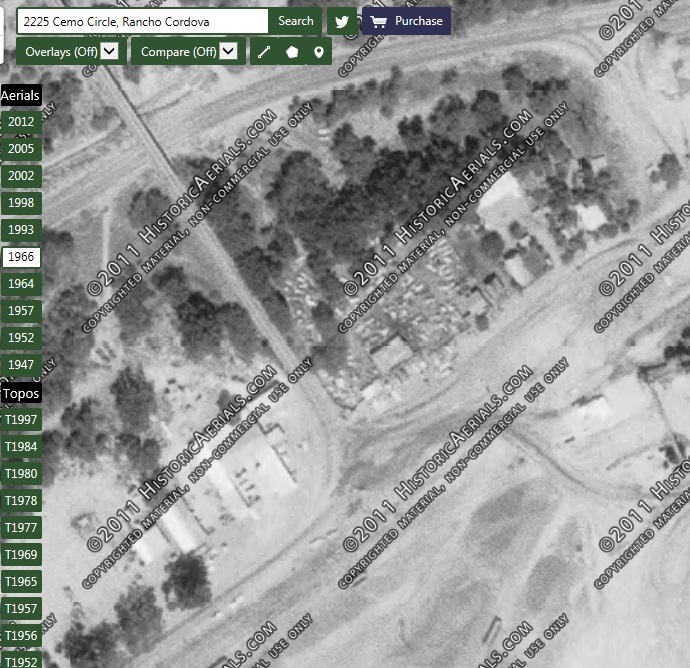 their work, and EAR would have been familiar with them. It was, in essence, amidst an area of inspiration for EAR, and a quiet biking route into and out of Fair Oaks. their work, and EAR would have been familiar with them. It was, in essence, amidst an area of inspiration for EAR, and a quiet biking route into and out of Fair Oaks.
Auto traffic on the historic bridge was stopped in 1967. Thereafter it was closed before being turned into part of the natural park area (self service payment required today) and a major link in the bike trail. It is now a commonly walked link between Rancho Cordova (this part now called Gold River) and Fair Oaks.
As noted, the businesses that once thrived there had by the 1970s moved south to Cemo Circle, and aside from a few remaining on South Bridge the yards, bays and warehouses were only ancillary to the main yards on Cemo Circle.
Today, the businesses in question on Cemo Circle and South Bridge are, of course, long gone (save one), but the yards remain. They impress upon one a secure lair for an assailant to come and go in various untraceable jalopies, return, open the cyclone gates, close them, lock them, park the car, and completely fade in unsuspected amidst the work of then reducing these automobiles to parts and thence to oblivion.
Before continuing, it should be noted that it is not being implied that there is any complicity in these crimes by any owners or partners of these auto wrecking establishments today or with whatever current businesses on Cemo Circle conduct out of the old buildings. Rather we look back in history now, near 40 years ago.
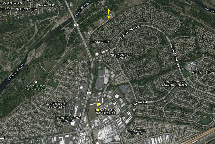 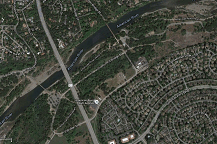
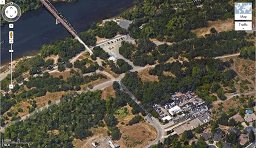
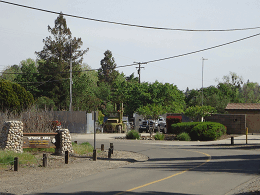 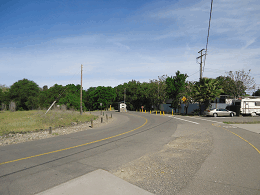
 
 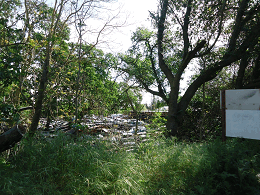
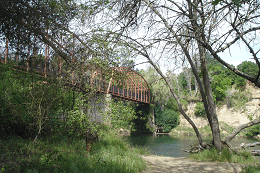 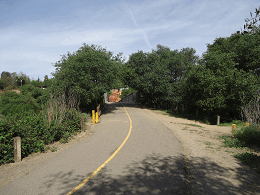
 
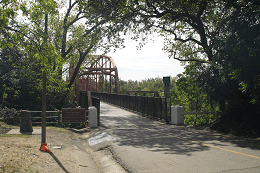 
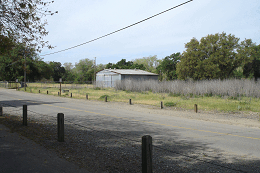 

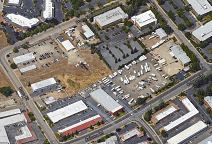
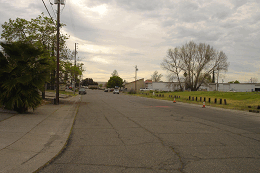 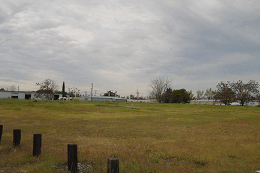
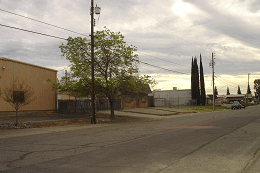 




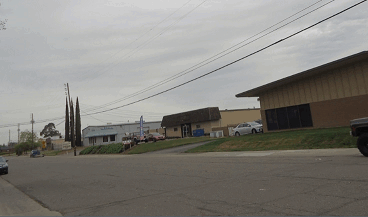
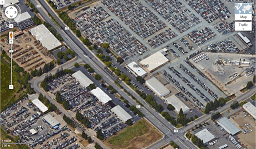
In addition to the above are some tantalizing coincidences.
American River Auto Wreckers, for example, offered home and business delivery of auto 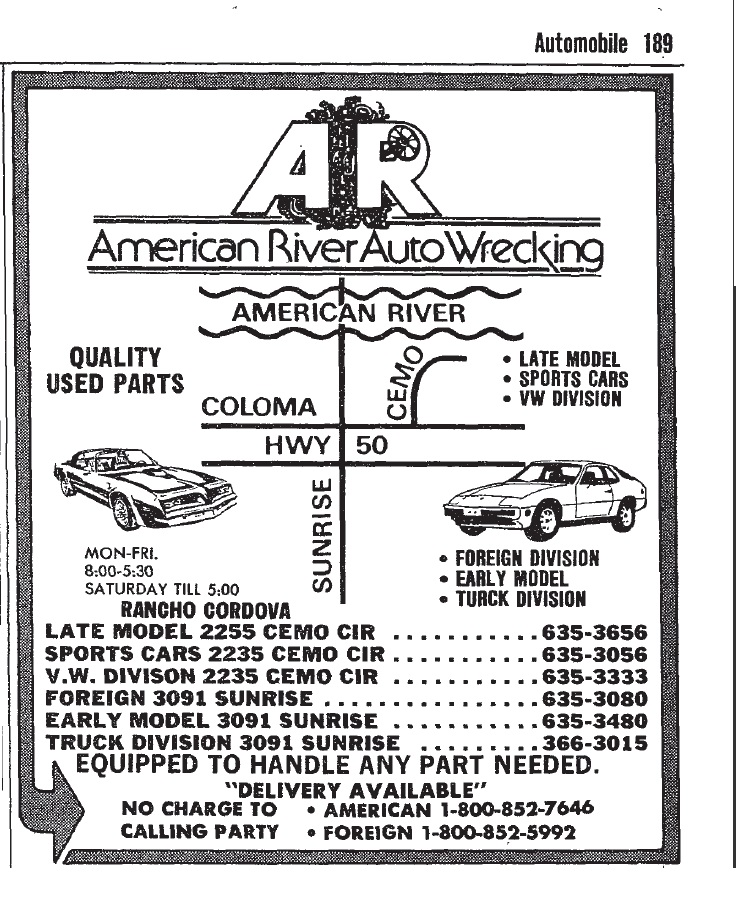 parts. These would not be delivered from a tow truck but from a workman’s van. parts. These would not be delivered from a tow truck but from a workman’s van.
Most likely, such a van would be unmarked. It would be a bland color. If EAR did drive a van on occasion, and felt safe parking it near the victim or in any neighborhood with potential witnesses, it would have to be an unmarked van. Vans, when seen by witnesses, were a bland blue-green color, unmarked and with small rear windows in the double doors in back. On one occasion (Danville, 46), a witness described the taillights as being vertical, which would indicate a Ford  Econoline. Econoline.
Delivery of auto parts and towing would also acquaint EAR with the major junkyards, such as those in Stockton and Modesto. He would drive the highways quite a bit. He would even go to as far as Windsor, north of the Bay Area. Richard Shelby inquired of the owner of the auto dismantler in Windsor to which the plate for the Celica could be traced. He said that anyone could jump over his fence at night and take what they wanted. I do not think that EAR drove all the way to an obscure wrecker in Windsor to merely jump the fence and steal a single license plate. I would suggest rather that on routine business EAR took it while at the wreckers, for whatever reason.
In such a capacity, delivering parts from a van, EAR would be unsupervised and be in a position to have a scanner. He would probably not be someone who answered his own dispatcher promptly, since he may have been prowling intermittently. In the tow truck he would definitely have a scanner. someone who answered his own dispatcher promptly, since he may have been prowling intermittently. In the tow truck he would definitely have a scanner.
There is one other curious point about the scanner. In the beginning, that dreadful unrehearsed beginning, EAR did not follow a script. He was developing much in his MO. If Crompton (Sudden Terror) is to be believed, then the sheriffs made much out of EAR having said “twinge” with Victim No. 2 in Del Dayo. Thus by following a rigid script thereafter EAR may have been responding in his way to this slip. He may therefore have had some link in the sheriff grapevine or this information at one point or another went out over the radio in conversation. EAR never used an unusual word again, though he did use an unrecognizable phrase: “Gimme a good drop.” It’s meaning can be derived from the context, but its origins are obscure.
Moreover, due to the nature of their business and their association with towing off and receiving car accidents, auto wreckers are near freeways and are located in the more utilitarian section of towns. After leaving the Sacramento area, EAR remained noticeably limited to freeway areas except in Modesto.
In this context it is perhaps wise to note the location of the major auto wreckers of the 680 Corridor of Contra Costa and Santa Clara County. If viewing this significant artery of traffic as a pole, its axes would be Concord in the north and San Jose in the south. The major auto wreckers of this corridor are, in fact, in Concord on Arnold Industrial Way and on Commercial Street in San Jose to the south. EAR commenced his strikes in Concord (38, 39), and then San Ramon (40), which is on 680 toward San Jose, and then San Jose (41, 42). It is interesting to note that Commercial Street is off Berryessa Road. EAR struck off Berryessa Road but on the other side of Highway 680 and the wrecking yards.
In between the only major wrecking area is Livermore/Dublin area. The San Ramon strike was quite close to this area.
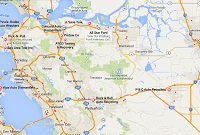 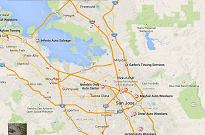
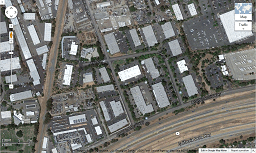 
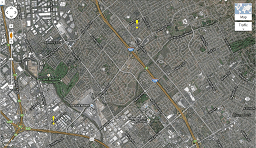 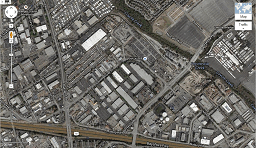

The same can be said for the attacks in Stockton, Modesto and Davis. EAR struck in places between the major yards, as though coming and going from the wrecking yards or parts pick up and delivery, he then diverted to stalk communities. The major wrecking areas of Stockton are off Highway 4 on Navy Road, south of where he struck. In Modesto they are just north of Ceres, south of where he struck. For Davis, they are just beyond in Dixon and Woodland.
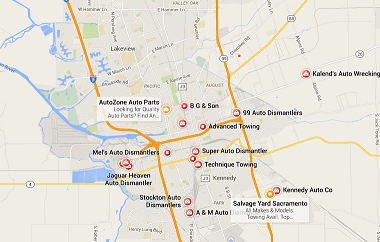 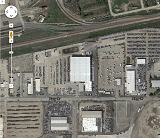 
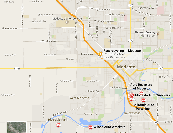 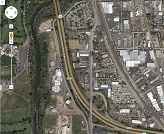 
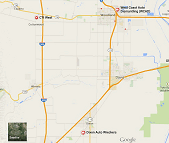 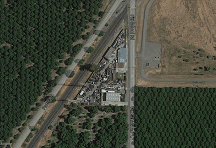 
When EAR mysteriously turned up in So. Cal, he did the same thing. He began in Goleta in Santa Barbara County. He struck north of Highway 101 in the area of North Kellogg, an area accessible via North Patterson, which links the area in question to Highway 101.
It is interesting to note that:
Goleta is the northern terminus for major auto wrecking in the greater Los Angeles area. The auto wreckers are on the south side of North Patterson on South Kellogg and School Bus.
EAR next struck in Ventura Co area, off Foothills Drive, which is accessible from the Santa Paula Freeway via So. Kimball. Two exits away on the Highway 126 (Santa Paula Freeway) is Mission Rock Road, the location of the major wreckers of this area.
EAR next struck in Dana Point at the southern terminus of the sprawling Los Angeles asphalt jungle. Both Pacific Highway 1 (El Camino Real, California’s first Royal Highway from the King of Spain) and Highway 5, California’s major modern artery, come together south of here in San Clemente. Off East Avenida Pico, in northern San Clemente, is the southern terminus of LA area auto wreckers and their yards.
In between these areas, EAR contained his So. Cal strikes, limiting himself to Highway 101 and Highway 5. In between these areas the major auto wreckers are in Tustin/Santa Anna and, naturally, close to Highway 5. They are off East Santa Ana Blvd. A few exits south is Culver and Trabucco roads in Irvine, off which EAR murdered two victims in 1981 and 1986 respectively.
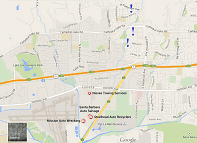 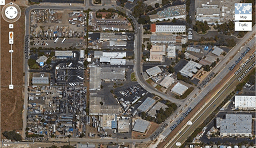
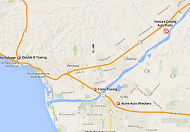 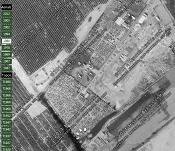 
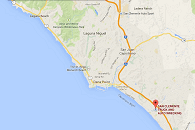 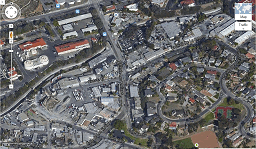
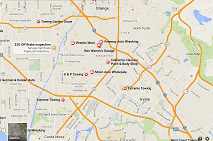 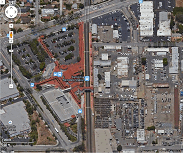 
It is a fact that EAR followed a pattern regarding his strikes off highways. In Contra Costa County (Highway 680 Corridor) he struck in the north (Concord), then struck further south (San Ramon), then struck the furthest south (in this case San Jose) and then worked his way back north (Danville, Fremont, Walnut Creek). The same can be said of EAR’s pattern in the So. Cal area. First he struck in Goleta, then south in Ventura, then the furthest south in Dana Point, then in between in Irvine, then again in Goleta, then last in Irvine.
All of the strikes are relatively near highways and some of them are on opposite poles of streets that lead to the major auto wreckers. His attacks, in fact, are always between the major auto wreckers, not beyond; and he almost always remains close to the highways. This is at odds with where he began in the East Area of Sacramento, where he struck established neighborhoods and then those under new construction far from the highways. Not only did this cause sheriff investigators to believe he was a local, this deduction is underscored by the consistent pattern he followed when he branched out from Carmichael/Rancho Cordova area. He never seems very familiar with the communities beyond that one section he has mapped out near the highway.
This could require a family connected in the business throughout the State, and the ease with which the EAR relocated would suggest he was a member of the owning family. This in itself would tend to favor that the principle business of the family was car dealerships. Wrecking yards, whether owned by them or not, would be something they would be doing business with daily.
Auto dealerships in the East Area of Sacramento would have been along Auburn Blvd and other major thoroughfares as there was no one single big auto mall. It is curious to note that if EAR worked at one of the Carmichael of Citrus Heights dealerships, he would have used Watt avenue or Sunrise to go to Rancho Cordova to the wrecking yards and used car lots. This would have acquainted him with Rancho Cordova just off Folsom Blvd, where many auto parts stores and garages existed.
It is further interesting to note, that the other major wrecking yards in Sacramento are in South Sac off Stockton Blvd. EAR would have driven from Folsom Blvd south on Stockton Blvd to Florin Road.
Even more significantly, Florin Road was the center of car dealership lots in South Sacramento. The attack on No. 22 occurred right off Florin Road in the Sky Parkway area.
Ferrying cars and other supplies between various family owned dealerships would give EAR the driving scope and driving time alone to do all his stalking. It would also give him the numerous cars that seemed available to him. As the sheriff memo noted: “Almost every car in the Kelly Blue Book has been associated with him.”
Northern California and Nevada belonged to the same dealership association. So. Cal had it its own separate association. Dealers had franchises centered in Sacramento, up into Reno, Lovelock, Elko, Nevada, and then into the Bay Area. A number of them had dealerships in Modesto, Turlock, and Stockton. Some also spread into So. Cal.
EAR’s strike pattern follows a Carmichael, Citrus Heights or Sacramento based car dealership, with other franchises and lots on Florin Road, in the Contra Costa Corridor and probably Turlock and Modesto.
It seems undeniable that EAR’s long distance strikes, and the various and sundry cars associated with him, means he must have been good at auto mechanics. No one who devoted so much mental energy to his crime spree could or would take the chance that his auto would not work after a crime. It should be a given that he had good auto mechanic knowledge.
Yet it would be dubious to say he was professionally an auto mechanic, since that is a static job. Everything indicates that he was a dealer’s son or close family member or close friend of the dealer’s son, in order to have the mobility to move about California. He also had the assurance that the cars he was ferrying or driving for short periods would also not fail. If he wa snot good at mechanics, he needed an entire auto bay at his disposal, and a major dealer would have made sure the cars being swapped were in working order. EAR clearly had to be associated with cars and have enough knowledge to make sure his jalopies were sufficient for the driving strain he put on them, or he knew that mechanics had just worked on them. He had to have a position of trust in order to get and drive the junkers for a while before dismantling them or ferrying them between lots.
EAR’s footprints form an interesting profile on their own. They not only tell us how EAR entered a yard, but where he stopped, looked in windows or, in a number of cases, where he simply knew where he was going. But something tells us more. They reconfirm that EAR probably worked outdoors. In the beginning he wore waffle stompers— in other words, fairly cumbersome hiking style high rim boots. Of his first 8 attacks, only at No. 7 (Del Dayo) did he use tennis shoes. Tennis shoes would almost be the norm thereafter. Yet according to Richard Shelby, waffle stomper boot prints were found in yards near to the residence of No. 12 (Primrose Drive). Could this indicate that EAR had just come off a long day at work? On occasion, victims smelled BO from him. Could this too indicate EAR struck right after a long day’s work or even during work? This was noted in Modesto as well, and if EAR was taking or delivering parts all day at the major yards south of the Tuolomne, he would be smelling by that evening.
If he was driving auto parts around or coming and going from junkyards, or working all day dismantling, moments of BO are understandable.
In order to be doing this type of work, the workman’s van would also need a blow torch in it, for the removal of parts. It is interesting to note that auto wreckers must know welding and have the equipment handy. In this instance it is relevant to add that on one occasion EAR seemed to use a welder’s hood instead of a ski mask (No 9). It can well be imagined that an auto dismantler would have welding and blow torch equipment about, plus several hoods. Some of this equipment would be in the workman’s van.
In his non Sacramento attacks, EAR ventured off the highway furthest in Modesto. If my suspect is the villain, then this could mean that his family’s connections there gave him more time or because Modesto is only an hour away from Sacramento and he could devote more time to prowling.
Even in his south Sacramento strikes EAR remained by a highway (No. 22, 32). It is only in the East Area of Sacramento in a circumference of Manzanita Blvd and Madison Avenue, that he seemed very familiar deep in with a community.
Since waffle stompers, tennis shoes and jalopy cars continued to be identified with The EAR’s beforehand prowling, it must be deduced that he worked in a job that allowed both type of footwear and access to such cars. An auto wrecker could presumably wear both.
EAR’s tan line would suggest an outdoors job as well. He developed a distinct tan line on his legs in mid to late summer. It was so noticeable that after the attempted rape of No. 3 (August 29, 1976), the neighbor/witness thought that the assailant was wearing white boxer shorts when he came out of the victim’s house. He was, in fact, naked from the waist down. (In the 1970s, as those old enough to remember know, shorts were short. There was no great fashion to them. They were meant to be short. Bermudas, long out of fashion from the 1960s, were gone.)
EAR thus had some kind of job that allowed him to wear shorts and acquire a noticeable tan line. Thus he often worked outdoors.
If EAR is delivering parts for an auto wrecker, picking up and taking in cars, etc., he is both unsupervised and yet accounted for. It would be assumed he is working. So long as he comes and goes from the yard on time, making his deliveries, he is accounted for. He can stalk with any number of vehicles soon-to-be-destroyed. At other times, he could be driving an unmarked, bland workman’s van. Every time a van was seen it was a bland, blue workman’s style Dodge or Ford with small windows in the back double doors. unmarked, bland workman’s van. Every time a van was seen it was a bland, blue workman’s style Dodge or Ford with small windows in the back double doors.
Richard Shelby quite rightly confesses that EAR’s ability to get so many phone numbers was the greatest mystery. EAR not only made numerous hang-up phone calls to intended victims, he also made them to many, many neighbors. The envelope with his phone bill in it must have been rather thick. I do not know if the investigators ever asked the Post Master to ask the mailmen which one had a resident who got an unusually thick phone bill, but it may have been worthwhile if he made his calls from a residence.
The last supposition presupposes that EAR lived alone and made calls
from a residence. The existence of Ex-Directories (or Polk Directories) is
well known, and they are maintained by libraries or voraciously purchased by
businesses. They contain all addresses, whether these residences have
unlisted numbers in the regular city directory. Moreover, Polk Directories also
contain a street-by-street listing, that is, giving a street name, and then each
address and the occupant of that address and their phone number.
Any business that made frequent pick up or deliveries would have one. If
the dispatcher made a mistake in writing down an address or number and the
deliverer could not find the location, it would be easy to reference a Polk
Directory and inform the confused deliverer. EAR’s knowledge of each
street’s intended victims’ phone numbers, including all neighbors, would
indicate not only the use of such an ex-directory, but access to one in a
business, such as auto wrecking/delivery, that would need one.
Constant sashay to a library would seem impractical. Thus it would seem
almost certain EAR had easy access to such a directory and could go through
it unobserved, especially the street index, and thereby learn the phone number
that went with the address. Polk Directories used to give the owner’s business
as well, and in a cross reference EAR could have learned the owner’s business
and thus second-guessed when the homeowner was likely to be away. This
would obviously assist him. If true, once again it underscores that EAR was in
a position of trust. Added to the other clues, auto wrecking still seems the
most probable.
Underscoring the theory EAR was in a position of trust is that it appears
the majority of phone calls that he made were during business hours. Very few,
comparatively speaking, were late at night. Such late night calls might come to
the attention of the businesses’ accountant and an inquiry could be made. The
late night calls could have been made from EAR’s residence. Other calls could
have been made from pay phones, at which he could stop at will. It was noted
to me by one online researcher that EAR frequently stole lots of change from
his victims.
It would be fluid to continue here with this and introduce in detail a suspect profile, but that is best reserved for later. As this is a profile drawn by the clues, it is best to continue with the visual clues so frequently associated with EAR.
In doing so, we must say that however well an auto wrecker or grunt thereof fits the pattern of stalking there are a couple of elements to EAR’s Prowling MO that tell us more.
(a) There is the fact that pumping stations are quite close to EAR’s attacks in the Sacramento area, though not in the CCC attacks.
(b) New construction was frequent. The EAR began hitting communities that were new and where new homes were still being built on the remaining lots.
(c) Frequently, very frequently, the victim’s home was up for sale, had been sold, or was near a home on the block that was for sale or had just sold.
This latter (c) caused investigators to wonder if EAR posed as a client or real estate agent in order to case the house layout in advance. Yet nothing turned up.
Personally I am ardent for my teenage suspect and thus I do not think it likely that he could pose for a real estate agent, though he did look older than his age.
Rather:
It is a fact that these homes were not just homes where a sign had been put up. These were homes in which the owners had already moved out or the new owner had already moved it. In other words, movers had been involved. Thus there is the possibility that EAR was:
15. A part time grunt for a local moving company or had an accomplice who was.
As such he would know many neighborhoods. He would know where
the canals are simply by having been in so many homes moving furniture.
He would have had contact with the families and seen which women were
of interest.
---------
We are thus at an interesting confluence. Either we accept that EAR worked more than one job or that he came up with an improbable number of novel ways to stalk a neighborhood and select victims. If not this, then we must accept there are an equally improbable number of coincidences in EAR’s crime spree.
The undeniable clues or coincidences, whichever way you wish to prefer them at this point, are:
(a) The uncanny ability to get and dispose of any number of jalopies.
(b) The ability to get license plates that belong to junked cars and cannot be traced beyond that.
(c) Much unsupervised time on his own.
(d) Knowledge of neighborhoods and canals.
(e) The access to phone numbers.
(f) Knowledge that police had been called to an intended victim’s house because of a “break-in.”
(g) An MO which to some extent relied on real estate dealings.
(h) Pumping or power stations nearby.
(i) New construction frequently nearby.
What shall we then say? Can an individual come up with all this and then add so much more (see Prowling MO) or does something tie all these together? As hard as it may be to believe, the progression of clues indicate that EAR did, in fact, come up with and utilize any number of ways to stalk a community.
The progression shows the following:
A young man, about late teens, seen in neighborhoods. He is associated with older cars, often junkers. Unknown to the residents, he is probably taking down addresses at this time. He returns later, jogging or biking or walking. During these times he is getting a closer look. Hang up phone calls have commenced. He returns at night and prowls. After the rapes, neighbors recall the phone calls, they recall some old car having been in the general vicinity. It hadn’t belonged to any neighbor or any known visitor. The license plates of these cars cannot be traced or they are traced to cars that have been junked over northern California.
From the very beginning EAR seems to be able to correlate addresses and phone numbers, and made an uncountable number of hang-up phone calls. Thus he seems to have had access to an Ex or Polk Directory at his convenience, without oversight, which would indicate the calls primarily came from a business, in which he had a position of trust. He could also do his research unseen at this business and call from home (or combination of both or pay phones).
EAR begins in a neighborhood where, apparently, he was attracted to his first victim merely by her beauty. This neighborhood provides no tactical advantage in terms of prowling homes— eg. open fields, orchards, canals, schools, parks. If his later record is any reflection, he must have been working when he cruised Paseo and Malaga. He could have been delivering parts nearby and diverted to stalk. For a teenager to be doing this before school was out, he must have been newly on the job, probably having recently dropped out or been thrown out of high school. There it began. He so enjoyed the thrill of conquest he developed his Stalking MO.
Yet in his first strike EAR is certainly unschooled in what he is about to do. He thinks first to cut a phone wire from without the house. Childishly, he greets his awakening victim in her bedroom doorway with pants down and himself aroused. He would do this again nearby, strutting down the street bottomless. It’s really not a portrait of terror yet. The sheriffs think it is some demented neighborhood kid.
Such an appearance is a poor reflection of his calculating mind. His calculating mind rather is seen in his caution. In his first few attacks he limits himself to corner houses or one or two away from the corner. He also strikes very near main thoroughfares so he can escape quickly and fade into traffic.
As his crime spree develops, he adds the above tactical allies to his stalking MO— schools, canals, orchards, bike paths, then CAT Corridors, and then expands further from corner homes to those further in the street, though homes closer to the corner remain favored.
It therefore should not strike one as surprising that such a diabolical and calculated character should add other aids. He may have worked part time as a grunt for a moving company, but the existence of homes for sale merely made it easier for him to look about and not appear that suspicious. Moreover, striking in locations of new construction would allow him to fade in rather easily as a construction worker. In areas of new developments not all the lots are completed and there aren’t as many neighbors in place to spot anything unusual. There is no old landscaping (trees, shrubs) to obscure his view of the houses, their windows, doors, side gates, fences, etc. It is simply easier to prowl and cast suspicion on itinerant construction workers.
Lastly, it cannot be overlooked that EAR also seemed remarkably aware of police communication over break-ins; perhaps he even had knowledge that they made note that he frequently wore olive green for night prowling. Neither a construction worker nor a real estate agent could monitor so obsessively a police scanner. Nor could the owner of an auto wrecking company. But, amazingly, an employee assigned to certain tasks could. No other profession could get a person so many different cars and then make it possible for him to ditch them without trace. No one else could get so many untraceable plates that belonged to junkers.
One thing remains consistent: a young man is associated with jalopies and sometimes a van. Hang-up phone calls persist. Then a young man is associated with biking or jogging the neighborhood.
As EAR’s strikes expand, he largely remains by the highways. For Contra Costa and Santa Clara Counties, it is always Highway 680. For So. Cal, it is 101 and Highway 5.
All strikes are between the major poles of auto wrecking.
Everything comes down to an auto wrecker. I could out EAR’s neighborhood Stalking MO by a laborious backworking, but the reason that brought him to such distant communities along the highways remained obscure. Now it can be determined. Auto wrecker. Nothing else fits all the clues— scanner, business with a Polk Directory, jalopies never traceable, license plates to junked cars, home delivery, vans, highways.
The portrait is:
A young man in his late teens who had a connection to Rancho Cordova in business and Carmichael in the area of Manzanita Boulevard for home. He went out of his way to disguise his voice and manner of speech, either its youth or something distinctive like a higher pitch or lisp. He smoked occasionally. He liked beer. He was brown-blond. He was about 5 foot 9 inches tall. He was about 160 pounds weight. He wore size 9.5 inch shoes. He was naturally athletic. He had a tolerance for cold weather. His eyes often looked sleepy, with heavy lids. He acquired a tan in late summer. This tan line was the length of boxer shorts, the common length of a regular pair of shorts in the 1970s. He may have acquired a tattoo on his forearm in the Summer of 1977. He was gone during the late summers, starting in the Summer of 1977. He was “under-endowed.”
But this is only the physical portrait. It is a lifeless effigy without the soul. This page has helped put spirit into that effigy. This portrait is that of an obsessive and calculating young mind who had the advantage and cover of a major auto wrecking concern with connections throughout the State. Rape really wasn’t his “thing.” It was terror. It was thrill. He didn’t charm his victims as many handsome serial villains had done. He preferred snarling threats to them between clenched teeth. He preferred glassy eyes darting death at them. Upon the disposable MO of recycled old cars and trucks he added many tactical advantages in order to stalk a community unseen and keep his identity unsuspected. This he successfully did; for 3 years almost routinely, both in Sacramento, Stockton, Modesto and Davis. Then with equal frequency in Contra Costa County. Lastly, he sporadically strikes in the greater Los Angeles/Santa Barbara area.
Nothing indicates he truly left the Rancho Cordova main office, for his strikes are months apart now in LA. Was he commuting, staying only occasionally in LA? Were the months interim the result of his ever-calculating mind pondering every move in the more deadly game he now played?— for he turned to murder, and in his case brutal murder. In this too he reveals his craft. The “Bedroom Basher” was afoot in those communities, and EAR added the MO of beating to death his victims. It’s silent in the dead of night. But it takes a strong stomach to do that. His good looks should not cause us to overlook that evil often has a glint in its eye.
Then there is a 5 year break after 1981. He then returns to within a mile of where he last killed in Irvine and kills again. Then there is nothing. For 30 years now the leaves of autumn have covered the graves of his victims. He has walked amongst us as unseen as he did in those neighborhoods so long ago.
With this portrait, of one so cold and calculated, one should expect he easily returned to normal life. The EAR and Original Night Stalker faded away. They were cold cases. For EAR they were closed cases. The statute of limitations on his crimes long expired by the 1990s. But something happened. CLUE made a DNA hit. It confirmed that The East Area Rapist and Original Night Stalker were one and the same. This got circulation in 2000. There is no statute of limitations on prosecuting murder. The ultimate terrorist was outed. But it wasn’t a name or a person. It was a chain of chemicals. A genetic fingerprint was made that has never been matched.
It is still wondered by many, both in law enforcement and those who have followed this bizarre case, if EAR had an accomplice on occasion (in the Sacramento area)— a scout, a partner in the fencing of those things stolen. Anyone who might have known who EAR had been, this long-forgotten terrorizing rapist, would realize there were now murder raps hanging over him. After 2000, did EAR suffer blackmail? Did the business he came to possess not thrive as it should?
Whatever the truth of it, that brown-blond, handsome young man had no conscience. He had no conversion. He lost his thrill. . . .and he got away Scott free. He had one advantage: he was the unsuspected.
|